- News
- Reviews
- Bikes
- Components
- Bar tape & grips
- Bottom brackets
- Brake & gear cables
- Brake & STI levers
- Brake pads & spares
- Brakes
- Cassettes & freewheels
- Chains
- Chainsets & chainrings
- Derailleurs - front
- Derailleurs - rear
- Forks
- Gear levers & shifters
- Groupsets
- Handlebars & extensions
- Headsets
- Hubs
- Inner tubes
- Pedals
- Quick releases & skewers
- Saddles
- Seatposts
- Stems
- Wheels
- Tyres
- Tubeless valves
- Accessories
- Accessories - misc
- Computer mounts
- Bags
- Bar ends
- Bike bags & cases
- Bottle cages
- Bottles
- Cameras
- Car racks
- Child seats
- Computers
- Glasses
- GPS units
- Helmets
- Lights - front
- Lights - rear
- Lights - sets
- Locks
- Mirrors
- Mudguards
- Racks
- Pumps & CO2 inflators
- Puncture kits
- Reflectives
- Smart watches
- Stands and racks
- Trailers
- Clothing
- Health, fitness and nutrition
- Tools and workshop
- Miscellaneous
- Buyers Guides
- Features
- Forum
- Recommends
- Podcast
feature
10 tech trends to copy off the Tour de France pros — wide tyres, chain catchers and tubeless are in, slammed stems and narrow cassettes are out
The Tour de France isn’t everyone’s cup of tea, but it is currently home to the world's best riders... and it also turns out they know a thing or two about riding bikes! So, who better to analyse in order to see what cycling tech is taking off, what saddles and gearing choices are preferable for 3,405 kilometres of hell, and what else you and I can (safely) copy off them to make us faster or more comfortable on the bike...
1. Don’t slam your stem!
For years it’s been almost expected that a pro's bike is slammed at a downward angle, with the stem as low as possible in what sometimes appears to be a competition of who can get the biggest drop between bars and saddle. However, when wandering around the bikes this year, it’s notable that fewer riders are buying into this game nowadays.
Oh yes, while a lower front end is arguably faster over short distances thanks to lowering your body and a reduction in your frontal area, speed is fairly pointless in the Tour de France (and any long ride for that matter) if it’s unsustainable.
> Should I buy a race bike or an endurance bike? The big differences explained
Many riders this year have a good few spacers under their stems, and we reckon that without the same stretching and conditioning that the pros do, most of our bikes should forgo the super aggressive look too in favour of actual real-world performance and comfort. Actually, most of our riding is probably better suited to an endurance road bike. You can check out our comparison between endurance bikes and race bikes using the link above.
2. Wide tyres aren’t slow!
Every year we say that tyres are the widest they’ve ever been on the road... and guess what, we’re going to say it again. We've seen the vast majority of road bikes being ridden at the 2023 Tour de France, and who’d like to guess the very smallest tyre size we saw? Not 23mm, not even 25mm, but 26mm!
That was a tubular tyre on team Astana’s Corima wheels. The majority of riders are using 28mm rubber, and we also spotted this set of 30mm tractor tyres on Matteo Trentin’s spare bike.
Just because a 23mm tyre might feel faster as you rattle your way down our less-than-perfect road surfaces, doesn’t mean it is. It’s probably about time we copied the pros and move to wider rubber.
3. Consider getting a chain catcher
Did you know that derailleurs were first seen in the 1937 Tour de France, some 86 years ago? You would have thought, then, that the big players at Shimano, SRAM and Campagnolo would have worked out how to keep chains on chainrings by now. Well, despite having access to the best mechanics in the world, the peloton is clearly less than convinced that this is the case.
Walk around the team buses, and you’ll see chain catchers being used more than EPO in the 90s (and that’s saying something). K-Edge’s design is present across plenty of teams including Bora-Hansgrohe and Quickstep, while Dylan Groenewegen goes for this Fouriers catcher.
> 6 road bike upgrades you don't actually need
Many riders double up the function of their chain catcher by mounting a magnet on the end of it, which can be used to measure cadence.
There are very few downsides to using a chain catcher. They don’t exactly weigh a lot and can be picked up for not a lot of cash. Would you add around 12 grams for the additional piece of mind, or have you had any chain-suck nightmares? Let us know in the comments section below.
4. It’s time to stop arguing about tubeless
Tubeless is a debate that continues to rage on, and while some of us are fans there are plenty of arguments to say that there’s some way to go before we all ditch the inner tubes. The pro-peloton is also seemingly having this invisible debate.
Bora Hansgrohe told us that on dry stages, they choose to use the clincher S-Works Turbo Cotton with latex inner tubes. For wet stages they switch to tubeless, the S-Works Rapidair tyre to be precise. This is replicated across the other Specialized teams, with Total Energies and Soudal Quickstep proving that tubeless tyres don't have to polarise opinion.
> Should you get tubeless tyres? Are they YOUR best option?
Many teams have, however, transitioned to tubeless for the majority of stages. EF, UAE, Jumbo Visma and Ineos all have tell-tale tubeless valves.
The conclusion is that sometimes tubeless is better and at other times there’s no point. That's it!
5. Use the right gear for the job
Ever wondered what cogs the pros are riding? Well, riders on Shimano groupsets appear to nearly always use a 54/40 at the front and 11/34 at the rear. Not only does this combo give more top-end speed, but teams also reckon it improves chainline as riders will more often be riding in the middle of the block, hence reducing drivetrain watt losses.
SRAM kicked up quite the storm when it announced its chainrings would top out at 50/37, even though when combined with the 10T sprocket at the back it gave a bigger gear than full-size rings and an 11T sprocket.
Since then, SRAM has given in and made 'pro level' chainsets in sizes 52/39T, 54/41T and a massive 56/43T, so that anyone wanting to push an even bigger gear can. Most of the pros from Jumbo-Visma and Movistar that we spotted are on the 52/39T option.
We’re not saying you should go out and copy these exact ratios, as for most of us that would be absolutely insane. However, you should tailor your gearing choices to the terrain you’re riding, just like the pros. A comfortable cadence is not only more efficient, but it can also save those joints and potential back soreness. Swapping out a cassette doesn't need to cost a fortune, and could vastly improve your riding.
6. Fuel like a pro
This next one isn’t necessarily tech, and more the lack of it. It wasn’t until we had a chat in the office that we realised how antiquated stem stickers are, and while it’s a solution that clearly works, we are surprised that tech hasn’t taken its place. Even though cycling computers now have the ability to remind you to eat and drink, the pros still love their stem stickers. This just goes to show how important fuelling on the bike is.
> How to eat right for sportives and long rides
Of course, the pros get through plenty of gels and high-carb isotonic drinks. Rice cakes are also a firm favourite within the peloton.
Eating and drinking enough on the bike will make a far bigger difference to your riding performance than just about any expensive upgrade you can make. So, whether you go paperless or make your own stem sticker to remind you to fuel, just make sure you do!
7. Try a short-nosed saddle
Being mostly a bunch of traditionalists, the peloton is often reluctant to try new things; however, short-nosed saddles are one of those creations that have seemingly come out of nowhere, and are now everywhere.
Just about every saddle brand offers saddles in both long and short varieties, and riders get the whole range to choose from. This year most of the Tour de France riders are going for the short-nosed ones.
Short-nosed saddles aren’t for everyone, but if you want to ride fast in an aggressive position then a shorter saddle could allow your pelvis to roll forwards more, making getting lower easier.
If you want to be extra 'pro', then you'll see that the majority of riders use a zero setback seatpost, mounting their saddles almost all the way forward to put them as far over the cranks as possible for maximum power transfer.
8. Keep your sponsors happy
Okay, so this one won’t apply to many people but it is interesting! A few years ago there was black insulation tape being stuck around all over the place to hide non-sponsor components, but the current generation of riders are either a lot less fussy about their kit, more well-behaved, or of course, the sponsors have listened and actually created the kit that the riders want.
Wondering around we struggled to find many things that would anger team sponsors at all. The Fizik saddle shown above was spotted on Jayco-Alula’s Giant Propel, forgoing Giant’s own brand Cadex. Victor Campanaerts opted for a sizeable Rotor chainring over Shimano.
It’s during the time trials that the bikes get unchained, and in particular, the Aerocoach Aeox Zephyr and Titan front wheels seem a popular choice, despite Aerocoach not being the official wheel sponsor of any teams. The whopping 100mm deep front wheels aren’t exactly light at over a kilogram, but as we know it's aerodynamics that rule supreme. Aerocoach says this is the fastest front wheel it’s ever tested. Plenty of teams are clearly buying into it.
We also spotted Aerocoach’s rear wheels in action. Take a look at this weird embossed section around the cassette area!
9. Spend time getting your position bang on
If you take a look around any Tour de France team's bikes, then you’ll soon see that no two of them are the same.
Separate from special paint jobs you’ll notice that every rider has a different stem length, handlebar width and, of course, saddle height. This isn’t because the team got sent a random assortment of components from their suppliers.
> The importance of a bike fit and riding position
The fit of your bike will make a far bigger difference to your comfort, technical ability and performance than you might think, so it's well worth investing some time in.
There are all sorts of books, YouTube videos and articles available on the road.cc website for fine-tuning your fit. Of course, you could also invest in a bike fit from a professional fitter. A good one doesn’t come cheap, but could be money very well spent.
10. Focus on aero rather than weight (to an extent)
I love being a bit of a weight weenie. Changing bolts for lighter ones, finding lighter bottle cages and so on. However, if you’re doing it in the pursuit of speed, then I’m afraid it’s going to make a very, very minimal difference.
The priority for the Tour de France pros is no longer getting the lightest bike possible. That's not because it’s impossible to get a disc brake bike down to the 6.8kg UCI weight limit, but rather because of the aero sacrifices that have to be made to do it. Pro riders love deep wheels, integrated cockpits and aero frames so much so that they’re prepared to lug around an extra few grams for the three weeks.
> Are expensive carbon wheels worth it? Deep vs shallow wheels
Even though you and I travel a lot slower than the pros, we can still learn a thing or two from them. Most of our rides are unlikely to take in the same huge mountains or elevation, and we’re also out in the wind for much longer, so aero is still important.
It's always worth remembering that between 70 and 80% of your drag comes from your body, not your equipment, so maybe that’s food for thought...
Will you be copying any of these Tour de France tech trends? Are there any that you think we've missed? Let us know in the comments section below.
Jamie has been riding bikes since a tender age but really caught the bug for racing and reviewing whilst studying towards a master's in Mechanical engineering at Swansea University. Having graduated, he decided he really quite liked working with bikes and is now a full-time addition to the road.cc team. When not writing about tech news or working on the Youtube channel, you can still find him racing local crits trying to cling on to his cat 2 licence...and missing every break going...
Latest Comments
- Born_peddling 6 hours 26 min ago
Muddyfox tour 100's I've wide & flat feet plus there's the optional choice of using cleats with them...
- Prosper0 6 hours 20 min ago
Just doing the Lord's work in case anyone's interested in this product. This Mucoff Pump is a £100 rebrand of an £85 Rockbros rebrand of a £60...
- mdavidford 7 hours 5 min ago
You forgot ignoring half the race to show awkward interviews with the riders' Proud Parents™ instead.
- mdavidford 7 hours 9 min ago
Obviously it means 'springing out of the bunch' on a critical sector. Or maybe it's referring to the time of year.
- David9694 7 hours 56 min ago
Car crashes through garden wall for second time in 18 months https://www.wiltshire999s.co.uk/car-crashes-garden-second-time/
- David9694 7 hours 58 min ago
Woman taken to hospital after flipping car onto roof in Trowbridge...
- A V Lowe 8 hours 40 min ago
Its blindingly obvious from the image that the DKE of the buses include the mirrors which extend to nearly reach the edge of the tarmac pavement on...
- Sredlums 9 hours 13 min ago
It's sad when being very good at your job - any job - isn't enough to earn a decent living. It shouldn't be that way....


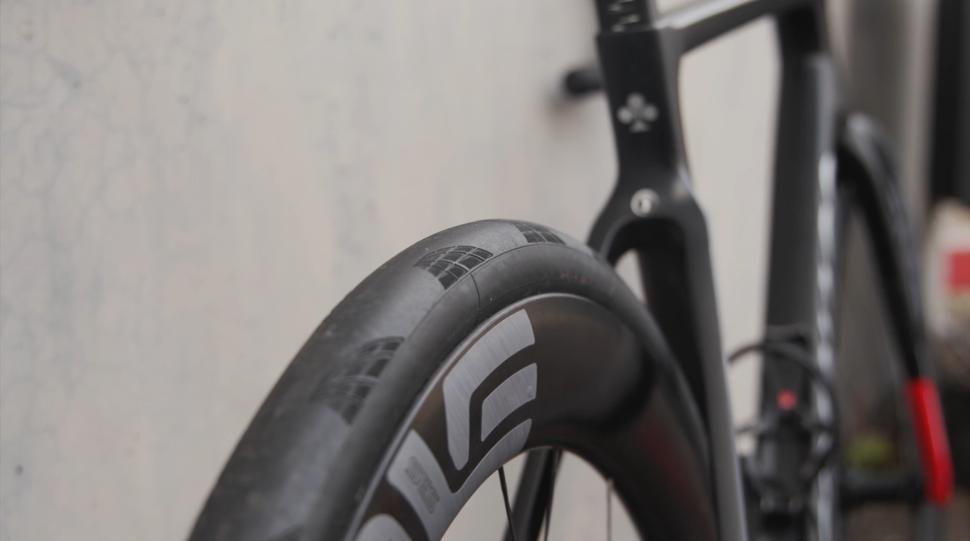
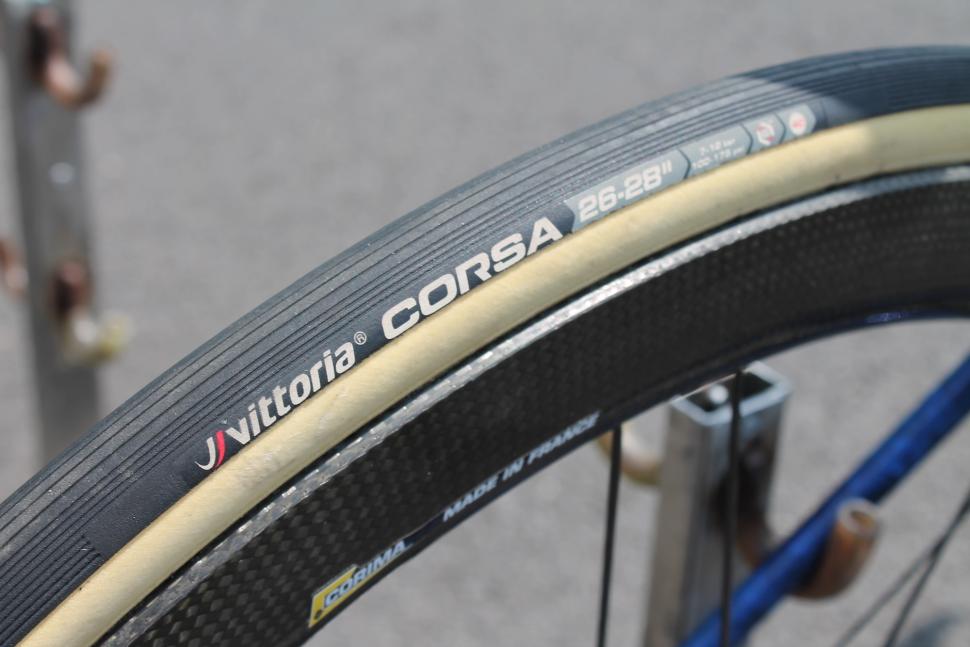





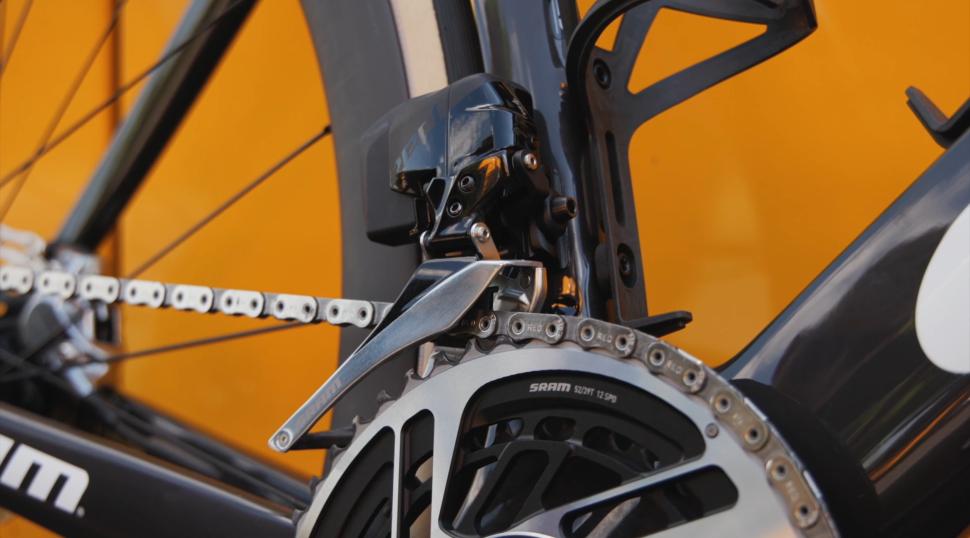







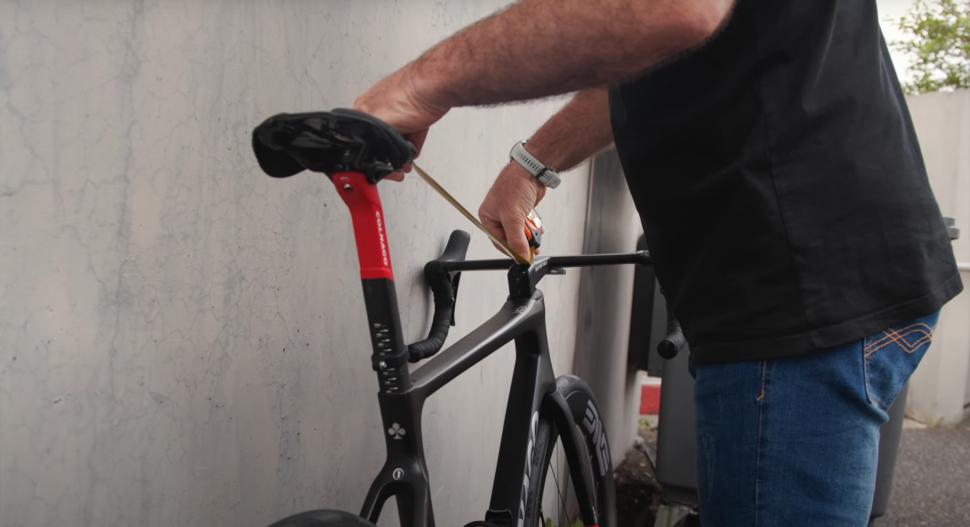
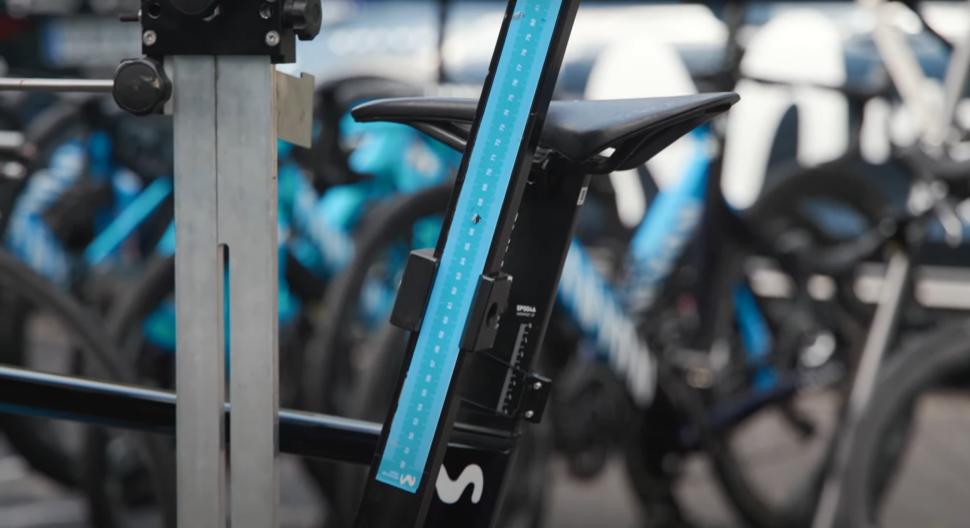


Add new comment
6 comments
Regarding tyre width, I'm sure there must be an upper width where (even) wider tyres become slower, but I haven't seen any evidence to support this. Any ideas?
Looking at the mess on the picture showing tubeless tires in a milky sauce, I do think the debate has still some way to go? As far as aero vs weight is concerned, it is obvious that weight matters still. Why is it then that all of the teams using all-out aerobikes change to light climing bikes?
Mmmmmmm - milky sauce mess.
If you lose body weight does this make you more aero too? I ask because losing body weight seems to interfere with that queer phenomenon known as "the fatbastid speed premium" which somehow allows the heavier rider to gain greater speed downhill compared to the waifs of the club run.
Not that I really care, these days, since I have become more tourist as the years have passed. Sometimes I have panniers on, which are both heavier (especially with lots of cake in them) and un-aero as anything.
I noticed in some Giro coverage of a bike weigh-in that the bike was 7.35kg, so they certainly aren't stressing over weight any longer...
I think you'll find that in this case it's the pros who are copying us.
The move to wider tyres definitely is one that did not originate in the pro peloton.
But then those riders who spend their time copying everything pro wouldn't know anything about that.